Weather report: Big rain on the way. Typhoon forecast in the West North Pacific. 5 days, 6 hours duration.
I
was on top of a mountain on a hot day with mixed skies. Behind me, someone said a typhoon is approaching. My reaction was that cannot be. I see no hints of an impending storm. Rain, perhaps, but not the “big one”. No one is panicked or worried about the prediction. I am concerned but did not think such a change would happen so quickly.
I arrived at my accommodation in the late afternoon. Not long after, the rains came… and lasted through the night and the next day.
Weather history
The rain and wind brought all kinds of thoughts to my mind. Would I be safe during this weather event? Would I even be able to continue on my pilgrimage? Suddenly, the magnitude 9.0 earthquake and tsunami on March 11, 2011 crossed my mind.
It was a catastrophic event in the history of modern weather disasters. More the 19,000 people died or are still missing. Property and infrastructure damage was extensive. The Fukushima nuclear accident and emergency resulted in an even higher loss of psychic security. Its severity was second only to Chernobyl in the Soviet Union. This triple tragedy gave the world (and me) pause.
These events weighed on my mind while I planned my pilgrimage walk on the camino in Spain. I had a lot of time to think about Japan. My biggest fear was getting caught in an earthquake, tsunami, or even worse. I concluded the people in this country face that challenge everyday. They survive as a nation, a culture, and a people. Ancestors are honored, gods are worshipped, and life is enjoyed.
So, I chose to go to Japan and walk around Shikoku island from one sacred place to the other.
If people can awaken each morning here and go to work, love, and smile under the auspices (or threat) of god and nature, I will not be afraid to leave my own door.

Maybe I am tempting fate.
Grab that umbrella and walk with me.
83 Ichinomiya-ji
Temple of the First Shrine
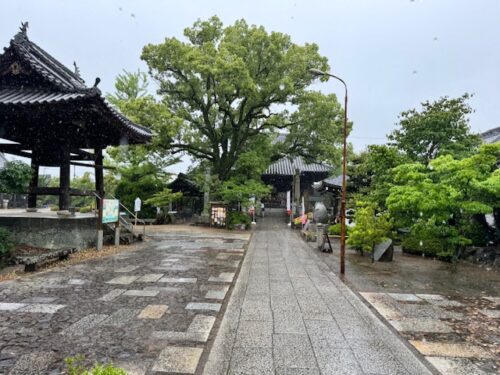
Bell tower overlooks the promenade approaching the main temple hall.
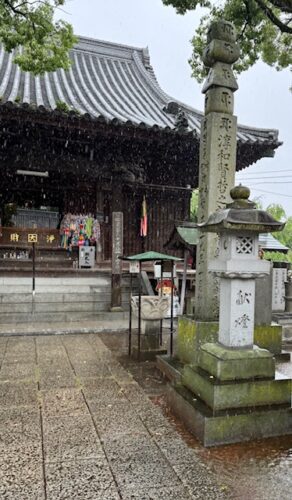
The Kondo or temple hall was built in 704. It burned down 1000 years later and was rebuilt.

There is no lack of water for these camphor tree roots.

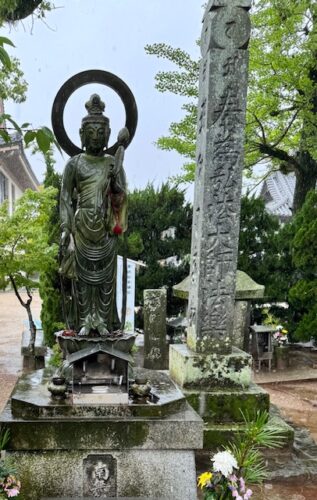
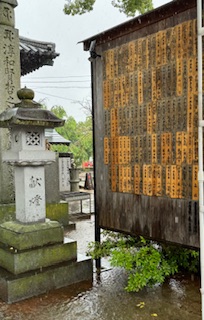
Ema (prayer plaques) were left hanging up where the kami spirits receive them.
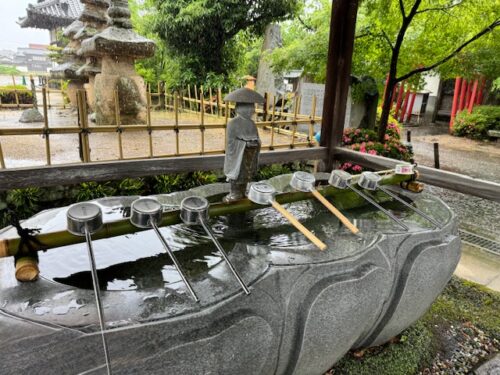
Temple fountain. Stone towers are in the enclosure behind the figure of Kukai.
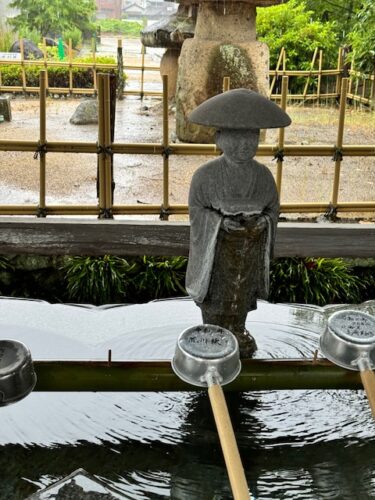
Kukai at the temple fountain.

The falling raindrops make the puddles “sparkle”.
Have you seen the rain?

Visitors pray and recite sutras in front of the main temple hall. The hum of the recitation was soothing.
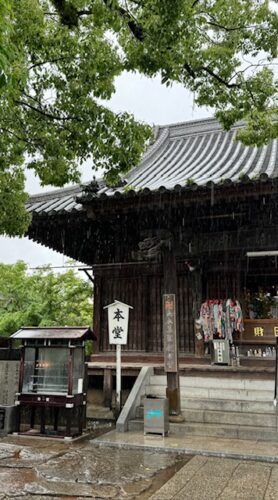

Another view of the main hall showing what’s on the left and right.

Main temple hall.

Rain never keeps visitors from worshipping.

Gomado (prayer) hall.

Carved lotus sutra: a copy of the sutra, carved on black granite, rests inside the sculpture.
The ability of the lotus to thrive in adverse conditions (muddy waters) serves as a metaphor for life’s challenges. It symbolizes the idea that, despite worldly distractions, one can achieve clarity and enlightenment.
The blooming lotus represents the soul’s journey towards self-realization and divine consciousness.
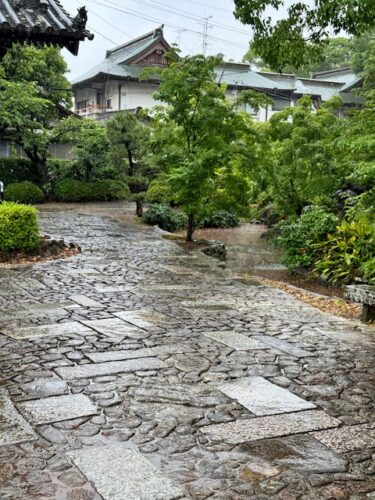
The stone tiles are slippery when wet!
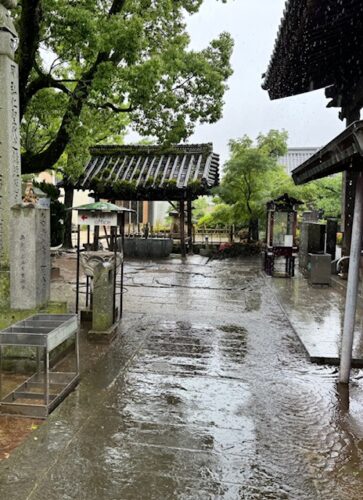
Can rain wash away a multitude of sins?
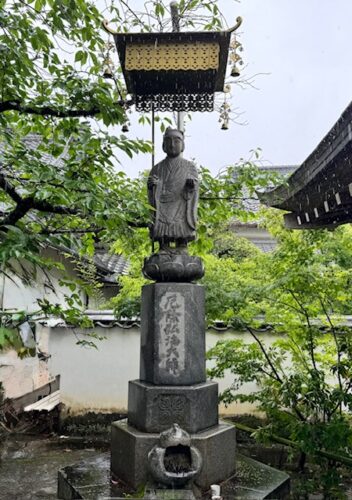
One of many shrines here.

Nioman gate.
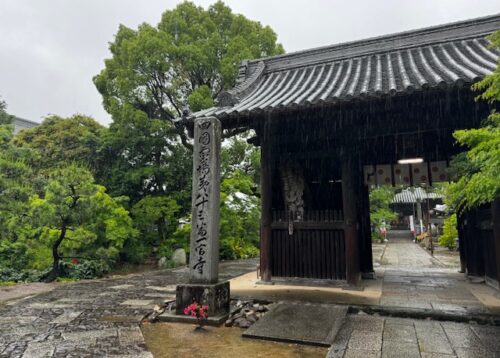

Damp path

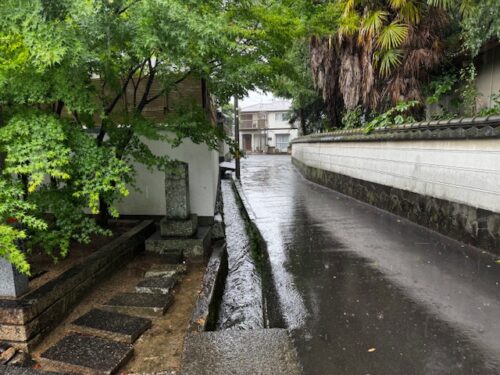
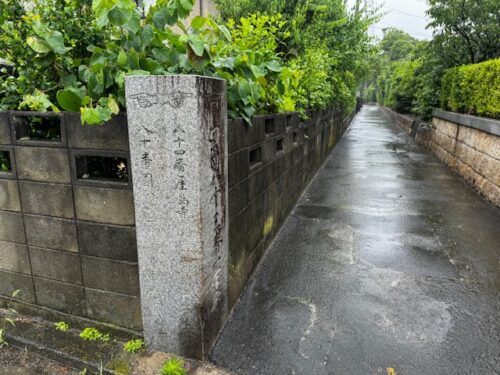
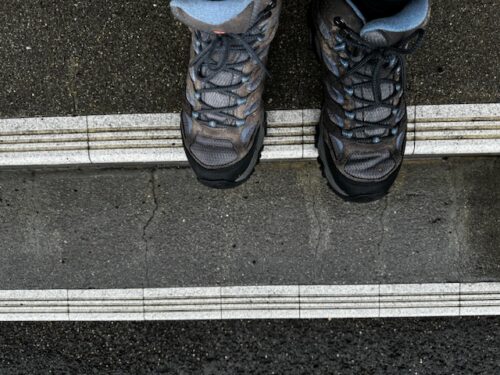
The walk in the rain was oddly peaceful. I did not think about how long it was taking to get here.
It was raining when I arrived at the gate. The precinct was quiet except for the rain steadily coming down on everything at the temple.
The rain continued to fall when I left. It followed me down the mountain to the guesthouse. So far, it is not letting up.
Tonight, I am grateful to have a dry place to land with other ohenro.
See you next time.
Baadaye and Mata Ne (またね)
Shirley J ♥️
This and several posts this summer chronicle my pilgrimage in Japan where I am walking the 1200 kilometer-long Shikoku 88 temple pilgrimage. Read my announcement here.

T83

2 thoughts on “🌸 Noire Henro-san: Lotus Rain”
Sounds like just a heavy (and long) rain. Don’t slip!
I am treading oh so carefully! A few visitors have slipped and/or fallen. I know what that feels like, ouch!
Comments are closed.